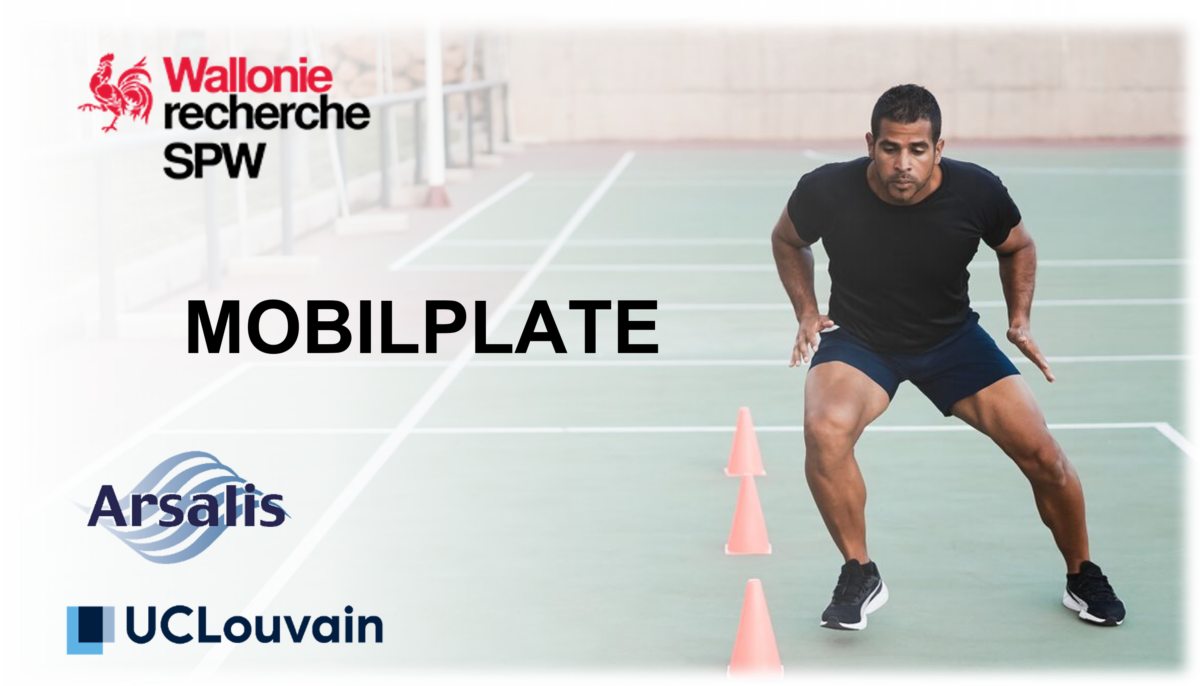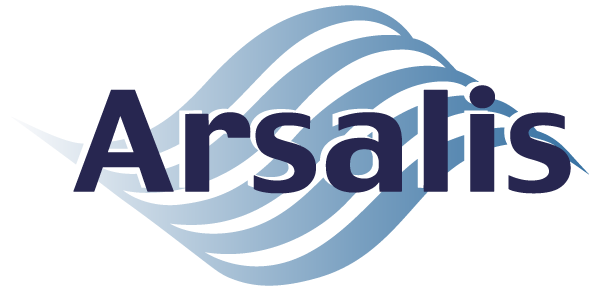Advancing the Return to Sport with Biomechanical Assessment
6 MARCH 2024
Introduction
Arsalis has successfully obtained a 4-year funding grant from the Wallonia Region under the Win4Doc initiative for the MOBILPLATE project. The MOBILPLATE project is a collaborative effort between Arsalis and UCLouvain, focused on advanced on-field technology, including force plates and other devices, to optimize the return-to-sport (RTS) for individuals who have undergone anterior cruciate ligament (ACL) reconstruction.

Current Challenges in ACL Reconstruction Rehabilitation
With a prevalence of 0.8% to 3.2%, ACL injuries are common in sports with jumps, pivots and changes of direction[1]. Despite surgical advancements, muscular deficits and knee asymmetries remain present 6 months post-operation[2]. RTS isn’t recommended before 9 months, with complete recovery for only 41% to 83% of the athletes[3,4], depending on age and competition level. Recurrence of ACL injury have been observed in 15% of injured patients[5].
Currently, in the management of ACL reconstructions, clinical tests for RTS consist in measuring the maximum force of the quadriceps and hamstrings (isokinetic test), functional tests with horizontal and vertical hops, and questionnaires[6]. Most of these tests assess the performance using the healthy limb as a reference value. The test battery, easy to implement in a clinic, fall to identify the readiness of RTS. Only 23% meet RTS criteria before competition, and 60% exhibit knee flexion alterations post-surgery[7,8]. Experts agree that there is a need to review the current battery of tests and suggest adding a biomechanical evaluation to measure the quality of movement[9].
How effectively can the biomechanics of the lower limb be evaluated in complex tasks
using a mobile system on the field?
The research project aims to develop a prototype to objectively assess the quality of sports movement, integrating kinetics and kinematics on the field. The challenge lies in creating a portable and user-friendly device that approaches the precision of laboratory measurements.
The Journey Ahead
The initial phase involves a review of literature to identify complex tasks and biomechanical variables crucial for assessing performance during ACL reconstruction rehabilitation. Subsequent stages will focus on prototype and algorithm development. Usability evaluation will ensure the practicality of the device and protocols in various scenarios.
The project’s goal is to validate the technical aspects of the prototype and software, establish precise usage guidelines for field applications, and set reference values.
Conclusion
The MOBILPLATE project, supported by Win4Doc funding, marks a significant possibility to enhance the rehabilitation process for individuals undergoing ACL reconstruction. By addressing the current challenges with a focus on advanced technology, Arsalis aims to innovate the evaluation and treatment of lower limb injuries in sports. Stay tuned for updates !
Win4Doc Funding and Project Overview:
Arsalis’s research initiative is backed by a 4-year funding grant from the Wallonia Region, facilitated through the Win4Doc 2023 call. This initiative allows Arsalis to engage a researcher for a doctoral research project in collaboration with a university research unit. Aligned with the ongoing activities of the Locomotion Physiology and Biomechanics Laboratory (LOCO), the project will unfold across four articles in five stages, covering literature review, prototype development, algorithm integration, usability assessment and validation.
References
- Montalvo, A. M., Schneider, D. K., Webster, K. et al.
Anterior Cruciate Ligament Injury Risk in Sport: A Systematic Review and Meta-Analysis of Injury Incidence by Sex and Sport Classification. J Athl Train, 2019. 54(5): p. 472-482. doi: 10.4085/1062-6050-407-16. Epub 2019 Apr 22. PMID: 31009238. - Larsen JB, Farup J, Lind M, Dalgas U.
Muscle strength and functional performance is markedly impaired at the recommended time point for sport return after anterior cruciate ligament reconstruction in recreational athletes.
Hum Mov Sci. 2015 Feb;39:73-87. doi: 10.1016/j.humov.2014.10.008. Epub 2014 Nov 24. PMID: 25461435. - Ardern CL, Taylor NF, Feller JA, Whitehead TS, Webster KE.
Sports participation 2 years after anterior cruciate ligament reconstruction in athletes who had not returned to sport at 1 year: a prospective follow-up of physical function and psychological factors in 122 athletes.
Am J Sports Med. 2015 Apr;43(4):848-56. doi: 10.1177/0363546514563282. Epub 2015 Jan 12. PMID: 25583757. - Lai CCH, Ardern CL, Feller JA, Webster KE.
Eighty-three per cent of elite athletes return to preinjury sport after anterior cruciate ligament reconstruction: a systematic review with meta-analysis of return to sport rates, graft rupture rates and performance outcomes.
Br J Sports Med. 2018 Jan;52(2):128-138. doi: 10.1136/bjsports-2016-096836. Epub 2017 Feb 21. PMID: 28223305. - Schilaty ND, Nagelli C, Bates NA, Sanders TL, Krych AJ, Stuart MJ, Hewett TE.
Incidence of Second Anterior Cruciate Ligament Tears and Identification of Associated Risk Factors From 2001 to 2010 Using a Geographic Database.
Orthop J Sports Med. 2017 Aug 18;5(8):2325967117724196. doi: 10.1177/2325967117724196. PMID: 28840155. - van Melick N, van Cingel RE, Brooijmans F, Neeter C, van Tienen T, Hullegie W, Nijhuis-van der Sanden MW.
Evidence-based clinical practice update: practice guidelines for anterior cruciate ligament rehabilitation based on a systematic review and multidisciplinary consensus.
Br J Sports Med. 2016 Dec;50(24):1506-1515. doi: 10.1136/bjsports-2015-095898. Epub 2016 Aug 18. PMID: 27539507. - Webster KE, Hewett TE.
What is the Evidence for and Validity of Return-to-Sport Testing after Anterior Cruciate Ligament Reconstruction Surgery? A Systematic Review and Meta-Analysis.
Sports Med. 2019 Jun;49(6):917-929. doi: 10.1007/s40279-019-01093-x. PMID: 30905035. - Welling W, Benjaminse A, Seil R, Lemmink K, Gokeler A.
Altered movement during single leg hop test after ACL reconstruction: implications to incorporate 2-D video movement analysis for hop tests.
Knee Surg Sports Traumatol Arthrosc. 2018 Oct;26(10):3012-3019. doi: 10.1007/s00167-018-4893-7. Epub 2018 Mar 16. PMID: 29549389. - Kotsifaki A, Korakakis V, Whiteley R, Van Rossom S, Jonkers I.
Measuring only hop distance during single leg hop testing is insufficient to detect deficits in knee function after ACL reconstruction: a systematic review and meta-analysis.
Br J Sports Med. 2020 Feb;54(3):139-153. doi: 10.1136/bjsports-2018-099918. Epub 2019 May 29. PMID: 31142471.
